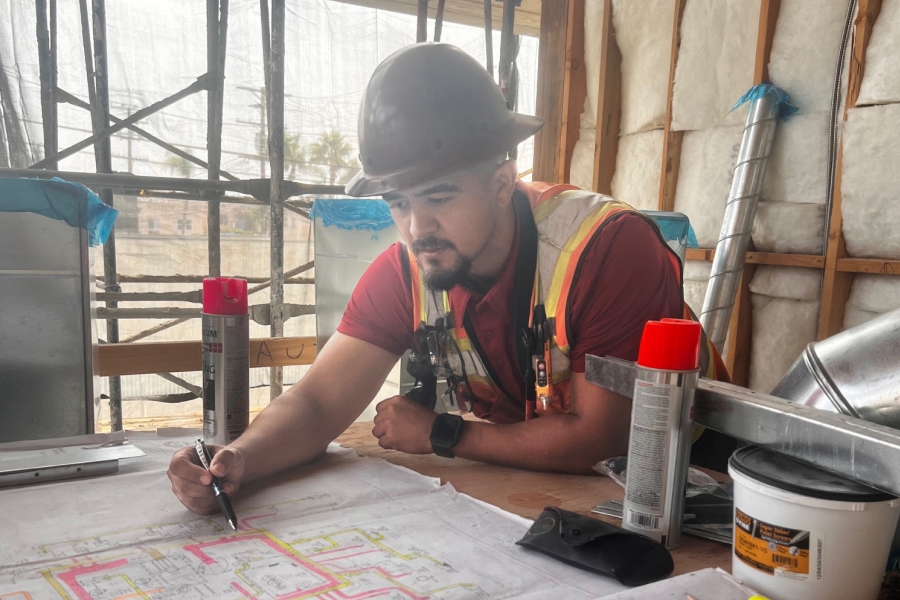President Joe Biden signed the Infrastructure Investment and Jobs Act (IIJA)—the bipartisan plan to upgrade a range of the country’s infrastructure—into law in November 2021. Despite enthusiasm for the five-year, $1.2 trillion law, construction companies have been anxiously waiting for the funds to move from the federal to state down to the project level. The trickle appears to be flowing slightly more freely in recent months.
“More than 36,000 transportation improvement projects—including at least one in every congressional district—have moved forward in the past 16 months as implementation of the federal Infrastructure Investment and Jobs Act (IIJA) continues,” said American Road & Transportation Builders Association (ARTBA) Chair Paula Hammond, in testimony delivered to a congressional panel on March 28, 2023.
In her testimony, she highlighted two federal transportation projects driven by IIJA funding:
- Pittsburgh’s Fern Hollow Bridge, which collapsed January 28, 2022, was reopened in less than a year as a 460-foot, four-lane span with the help of $25 million in federal funding, including IIJA money.
- In Idaho, a 6.5-mile stretch of Highway 95 is being expanded with new lanes, wider shoulders and more level grades.
“Nearly half of the IIJA’s generational investment—$450 billion—will be spent improving highways, bridges and public transportation systems. The IIJA represents the largest nominal increase in highway funding in 65 years,” she said.
States are also making plans for historic infrastructure upgrades using IIJA funds. In California, for example, the state’s Transportation Commission approved $4.3 billion for green transportation and transportation infrastructure; IIJA funds account for $571 million of the project costs.


Bluebeam Resource Hub
Browse case studies, watch webinars, and see what’s new with Bluebeam.In August, Texas Gov. Greg Abbott announced a record 10-year, $100 billion statewide roadway construction plan. Most of the funding is earmarked for roads and highways, but the Texas’ Unified Transportation Program also identifies public transportation, maritime, aviation and rail projects as priorities. The White House has also highlighted notable projects financed by IIJA, and the General Services Administration launched an interactive map of all IIJA project awards to track the law’s impact on construction projects.
Construction companies are optimistic about the progress being made. For example, Construction Partners Inc. pointed to the IIJA as playing a significant role in contributing to the company’s single highest revenue in its history. Fred J. (Jule) Smith III, the company’s president and chief executive officer, said in a press release, “The Infrastructure Investment and Jobs Act is fully implemented and is driving investment in all six of our states’ roads, bridges and airports, while the continued migration to the Southeast supports a vibrant commercial economy in our markets.”
During the United Rentals Inc. second quarter 2023 earnings call, William Grace, the company’s executive vice president and chief financial officer, commented on the impact of IIJA thus far and into the future:
“It’s not one of those things that is easy to track as you know,” he said. “I would intuitively say yes, we do expect a lot of the civil service projects that are funded by the infrastructure bill and prospectively the Inflation Reduction Act to start gaining momentum in terms of what the cadence looks like. It would be great if there were a schedule. We have not found one, but certainly that the outlook for infrastructure is positive.”
Will Gabrielski, AECOM’s senior vice president of finance, treasure and investor relations, also credited IIJA funding with contributing to the company’s ongoing growth and profitability during its third quarter 2023 earnings call.
“The U.S. funding for key infrastructure initiatives is advancing. This includes increasing activity for the IIJA, Inflation Reduction Act, and robust state and local infrastructure investment. A great example is our selection to serve as a lead designer for the renovation of the historic Brent Spence Bridge Corridor project, which we were awarded after the quarter closed,” he said on the August 7 earnings call. “We expect these drivers to further accelerate in 2024 and beyond, which is consistent with the continued growth in our pipeline of proposals and bids submitted.”
Anticipated roadblocks
Once awarded IIJA funds, difficulties range from a skilled labor shortage to inflation and Build America, Buy America Act requirements, which says a project’s iron, steel, construction materials and manufactured products must be made domestically. This is problematic for the industry.
“Increased material costs and supply chain challenges undoubtedly have had a dilutive impact on the law’s investments,” Hammond said in her March testimony. But she added, “It’s also clear this situation would have been dramatically worse had Congress opted for another flat-funded extension of surface transportation programs. Our analysis shows there has been real market growth over the last year.”
Hammond also cautioned committee members about new and well-meaning IIJA requirements related to expansion of Buy America. “If Buy America provisions are not pursued with stakeholder input and articulated clearly, it could have the opposite outcome and result in unnecessary project delays.”
Concluding her testimony, Hammond observed, “The initial data reveal IIJA’s highway, bridge and public transportation investments are working as intended. Many more benefits for the American people are still to come.”












